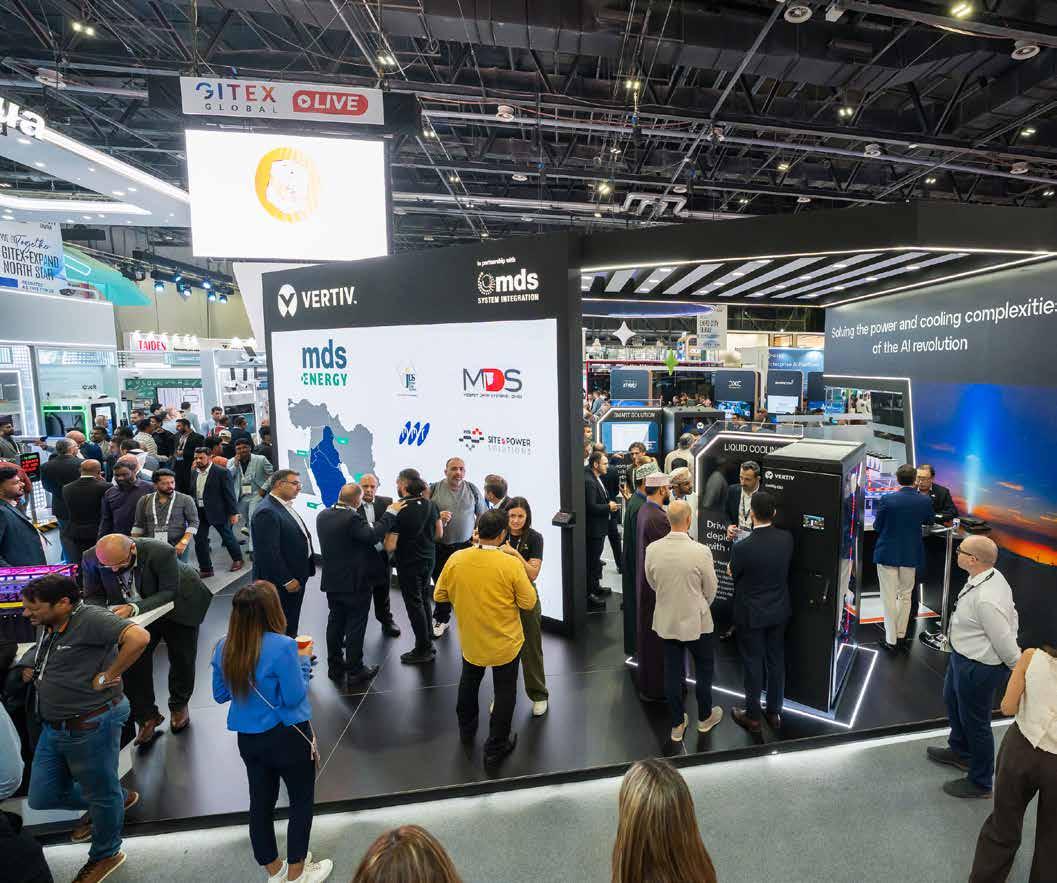







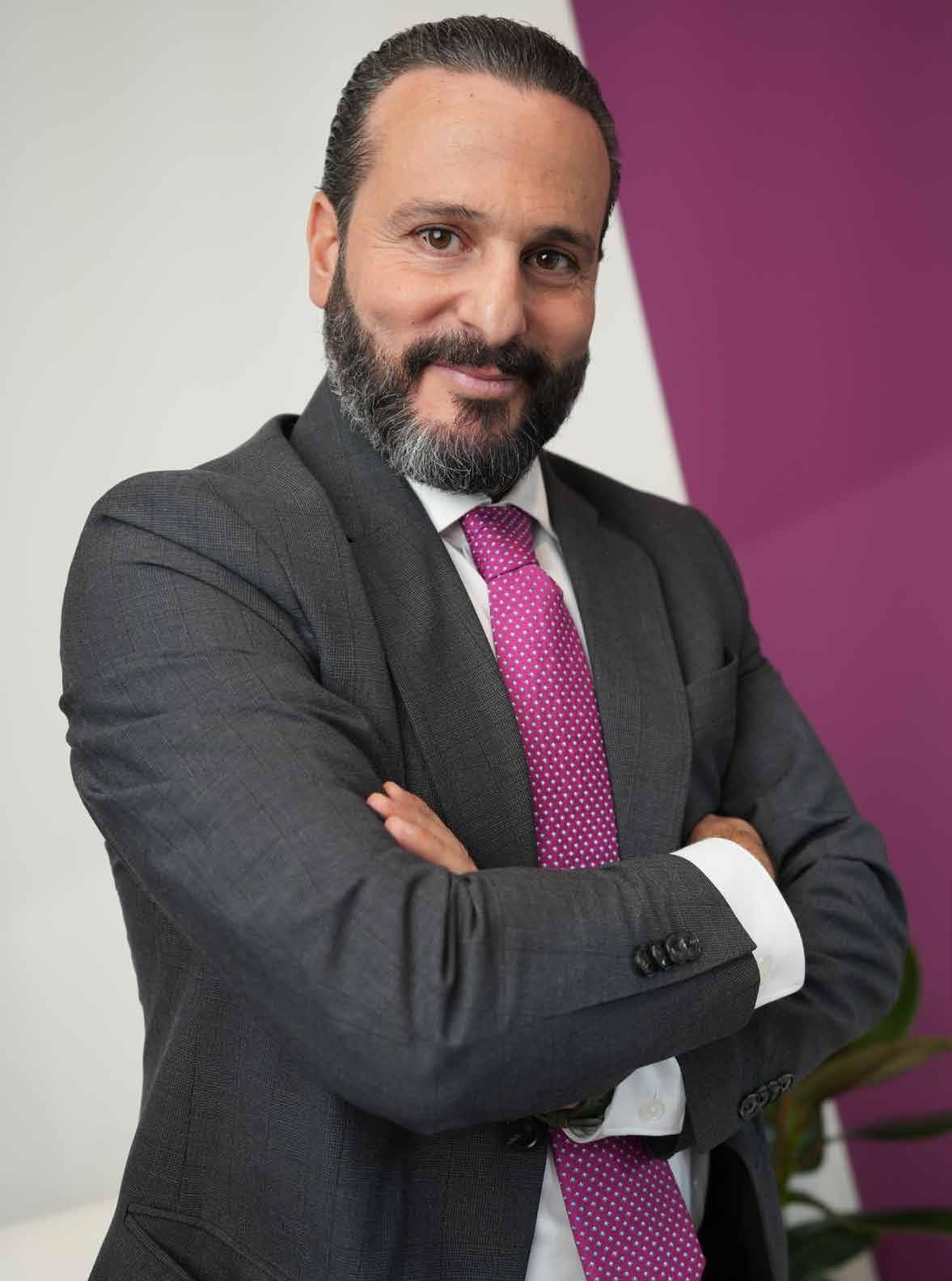










Samer Semaan, Distribution & Alliances Director, META at Pure Storage, spoke to Sandhya D’Mello, Technology Editor, CPI Media Group, about the company’s commitment to partner development, Dubai’s evolving influence in the global tech landscape, and the growing adoption of subscription-based models that are transforming the future of data management.
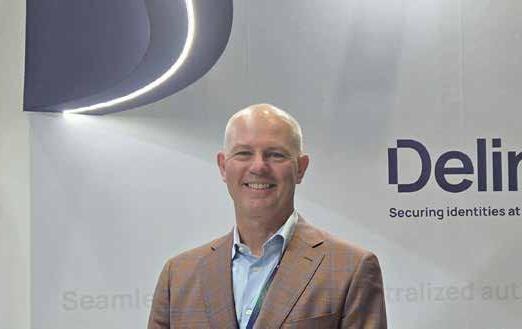





How do events such as GITEX uplift the regional channel landscape, and how does Pure Storage contribute to that growth?
Dubai has become the hub of the future and GITEX acts as a gateway for new and emerging technologies, opening doors not only to the Middle East but also to Africa and the wider region. Every major tech company comes here to showcase the latest innovations, but what makes GITEX powerful is its ecosystem. Our
business model relies heavily on this—our distributors, partners, and alliances. For technology to reach customers effectively, it must be communicated and delivered correctly. At Pure Storage, we take this responsibility seriously. Our large presence at GITEX reflects our belief in the platform’s value. We work closely with our partners, providing the right tools, training, and enablement programmes. It’s a twoway relationship—we learn from them, and they learn from us. This
mutual growth ensures our ecosystem has the confidence and capability to take our solutions to market and drive meaningful business outcomes.
Global trends show that tech talent is increasingly moving toward Dubai. What are your thoughts on the city becoming a magnet for international professionals? Dubai and the UAE are leading examples of countries that don’t just adopt technology—
Mutual growth ensures our ecosystem has the confidence and capability to take our solutions to market and drive meaningful business outcomes”.
they embrace it early. Whether it’s artificial intelligence, smart-city initiatives, or sustainable innovation, some of the world’s most ambitious
projects are happening here. The government’s commitment to digital transformation is unmatched. When you see this level of

investment and ambition, it’s natural that global talent wants to be part of it. People recognise that innovation today often starts in Dubai before spreading to other markets. That’s why we’re seeing a steady inflow of professionals and entrepreneurs who view Dubai as the place to be.
Being at GITEX means being at the heart of global innovation. What’s your personal take on this year’s atmosphere?
GITEX is always special. I like to call it a “love–pain” relationship—we all love the energy, the opportunities, and the connections, but by the end of the day we’re completely exhausted! That said, it’s worth every bit of effort. GITEX gives us the chance to learn, collaborate, and exchange ideas with industry peers. What matters is that we follow up after the event— turning conversations into partnerships and opportunities. The key is to maintain the same energy and passion throughout the week.
Looking ahead to 2026, what will be Pure Storage’s top focus areas in terms of regional growth and technology?
Geographically, our main focus markets remain the UAE, Saudi Arabia, Qatar and Egypt. We have strong on-ground teams and expanding operations in each. From a technology perspective, our top priority is driving awareness and adoption of our subscriptionbased business model. Subscription is the future—it offers customers flexibility, predictability, and peace of mind. With Pure’s model, customers pay only for what they use, enabling them to scale effortlessly. We believe this represents the future of technology consumption—simple, efficient, and aligned with how modern enterprises prefer to operate.
As cyber threats continue to grow in scale and sophistication, organisations in the Middle East region are ramping up the adoption of intelligent security and governance technologies. At the show, Praneeth Vanteru, Technical Evangelist at ManageEngine, shed light on the company’s role in strengthening digital resilience for regional enterprises and their latest innovations.

Vanteru said: “GITEX presents a great opportunity to meet our customers and partners from across the region. We are present across
the Middle East and Africa, so we look forward to introducing the new products we’re launching this year.”
Vanteru noted that
the Middle East has seen a significant rise in ransomware and cyberattacks, particularly targeting high-value industries like finance, oil and gas, and energy.
On the other hand, he highlighted that organizations are increasingly leveraging AI within their environments to strengthen their cybersecurity defenses.
“From a government perspective, there’s a lot of interest in reinforcing compliance frameworks and identity and governance structures. That’s how the region is looking to counter the growing threats,” he added.
Discussing what excites him most about the Middle East’s digital transformation journey, Vanteru said
the region’s openness to experimentation sets it apart. “The most exciting thing is that this is a region where organizations are not afraid to try new technology,” he said.
He explained that ManageEngine is driving innovation across three core areas — artificial intelligence, identity and governance, and security.
“In AI, we’ve introduced a virtual agent called ‘Ask Zia’, which is a Zoho AI,” Vanteru said. “It includes sentiment analysis, analytics, forecasting solutions, and integrations with various large language models, including ChatGPT.”
In the area of identity governance, the company’s AD360, an integrated identity and access management (IAM) solution, features risk exposure management, providing a graphical view of lateral threats within an organization.
He said: “We’ve also added local multifactor authentication capabilities to strengthen identity protection.”
In terms of security, ManageEngine has completely re-engineered its threat detection
Withthecybersecuritylandscapetransformingrapidly,ArtGilliland,ChiefExecutive OfficeratDelinea,discussedhowartificialintelligence(AI)isbothamplifying opportunityandthreatandwhyidentityisemergingasthenewfrontlineincyber defense,inaninterviewwithTahawulTech.
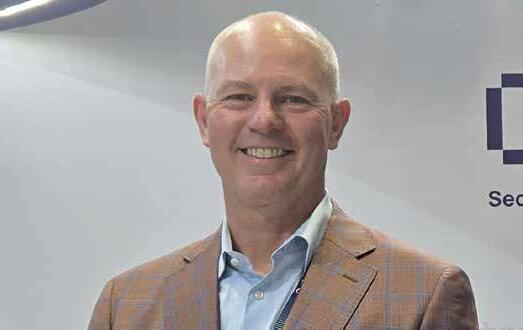
Gilliland explained: “In the adversary world, there are a ton of cybercriminal marketplaces. Because of that, individual cyber gangs can be highly skilled at identifying users and creating profiles, or at breaking in and gaining a foothold. They then sell those parts of the kill chain to the next player. Such a marketplace is being supercharged with AI.
“The challenge for companies is that there’s a structural imbalance
between a company and a marketplace. In a company, protection is achieved through a structured budget that’s renewed annually. Once the budget is depleted, it’s exhausted. For adversaries, it’s a market. They can experiment endlessly, and they only have to be right once. This structural imbalance is driving their innovation, and new tooling is making them faster and more efficient. Adversaries are
going to move to AI very quickly.”
Gilliland pointed to Delinea’s recent findings that identity-related vulnerabilities now make up nearly 13% of all Common Vulnerabilities and Exposures (CVEs).
“Identity is becoming a very high-value target”, he said. “There are two reasons for that. First, it’s way easier to steal someone’s identity and log in. The bad guys don’t really ‘break in’
The most exciting thing is that this is a region where organisations are not afraid to try new technology”.
console. “We’ve brought in a trilogy of security mechanisms,” Vanteru explained. “We correlate events happening across the network, integrate user and entity behavior analysis, and connect with third-party threat feeds, all in a single console.”
To minimize false positives, ManageEngine has introduced objectlevel identifiers that reduce the signal-to-noise ratio. “This improves the number of true alerts and saves a lot of time for IT administrators,” he added.
Vanteru believes that AI is becoming the unifying thread across ManageEngine’s portfolio of solutions. “We see AI as something that can blend into all the solutions we have,” he said. “When it comes to agility, AI makes things faster through automation, saving time
— is attractive to the bad guys. That’s why we’re seeing this rise”.
When asked how AIdriven defences can help detect and prevent such attacks, he highlighted Delinea’s focus on intelligent authorisation.
for IT administrators and enabling organisations to focus on strategic objectives”.
He added that AI also enhances security operations. “It can predict threats better and respond faster than typical human intervention. Making AI the central theme between all our solutions is how we’re helping organisations stay secure, agile, and future-ready”.
Reflecting on the response at this year’s GITEX, Vanteru said, “It’s been very vibrant. We’ve had a lot of interactions with customers as well as new prospects. These are really exciting times ahead”.
He concluded by inviting attendees to explore the company’s innovations. “I would request everyone to visit our booth; we have amazing things to offer this year”.
across an organisation. With AI, you can. You can monitor every login and interaction, making precise access decisions without slowing down productivity. That’s the real benefit of intelligent authorisation”.
Identity is becoming a very high-value target”.
anymore — that’s hard to do. The tooling for detecting break-ins, such as firewalls and endpoint security, is quite effective. But if you log in, it’s just way easier and cheaper. So, many adversaries are moving to identity as an attack vector because it’s cost-effective”.
“The second reason,” he continued, “is that if you log in using a valid credential or identity, you’re invisible to all the other security controls. Not only is it cheaper, but you can also stay in the environment much longer since you’re allowed to be there. That combination — cheaper and invisible
“One of the things Delinea is investing in heavily is intelligent authorisation, or AI-augmented authorisation”, he said. “We look at a lot of context around access. There are obvious checks, such as verifying whether a login request can actually come from a given location, but there’s also workflow context. For instance, if you’re logging into a sensitive system, there’s usually a ticket from ServiceNow or a similar tool”.
Gilliland explained that AI can correlate this contextual information in real time. “We can ask a user why they want access, capture their response, and correlate it with where they are, what their role is, and what the workflow says. AI helps us connect all those dots and translate human interaction into highfidelity insights that help the system make better authorisation decisions.
“Without AI, you could do all that manually, but only for a few logins. You couldn’t do it thousands or tens of thousands of times
To stay ahead, Gilliland said organisations need to adopt automation in their defences. “Companies need to automate the way they respond, monitor, and view identity access. Step one is taking better control of credentials. Step two is being able to watch, manage, and authorise access in real time”.
Gilliland acknowledged that while AI introduces new risks, it is also a powerful enabler. “The reason people move to AI is because it creates huge benefits. Companies are using AI in their environments to drive real productivity and efficiency. We’ve seen that within Delinea, in how we use AI to build software and integrate it into our products”.
He concluded: “Organisations will continue embedding AI into their products and processes. They need to consider how to secure it, automate the process, and stay ahead. There are new horizons that AI will open up that we don’t even know about yet. It’s the future, and it’s something we’re truly excited about”.

AtGITEX2025,TimPfaelzer,SeniorVicePresident&GeneralManager-EMEA, Veeam,toldVeronicaMartinhowthecompanyproritisestheregion’skeymarkets andindustries,alwaysensuringenterprise-scaledataresilience,andleveragingAIto strengthensecurityandcompliance.

Which three countries and two industries in the region will you prioritise this year, and what are your goals for these countries and industries? In the region overall we’re very active - including here in Dubai and across the Emirates - but another key focus nationally is Saudi Arabia. We’re also seeing a lot of emerging businesses coming up in Egypt and neighbouring regions, but I would say the biggest investment focus right now is in KSA. The reason for this interest is simple: the GCC is extremely advanced in terms of forward-thinking and innovation. You can see it at events like this - every company is here with an idea of how to move things forward, digitalise processes, operationalise IT, and embed technology into daily work and life. All of these factors are coming together in Saudi, where we see significant investments aimed at building the next level of
the country’s future. Global players like Novo, Google, Microsoft, and others are all active here, making it a strong market for us as well. We’ve been operating in the region for many years, but currently, there’s a big surge in demand, and it’s an exciting time to be part of this growth.
What recovery time and data-loss targets can Veeam achieve today at an enterprise scale, and can you cite one recent EMEA incident where you demonstrated it under real attack conditions?
There are multiple factors coming together. First is enterprise scale. What defines enterprise scale is the ability to handle a multitude of data points across diverse storage options - whether that’s hyperscalers, on-premises systems, or outsourced environments.
In our recent ransomware report, we surveyed hundreds of customers and found that 92% are using
more than one cloud - and that’s just for cloud storage. On top of that, there’s the on-premises data, so managing this highly diverse data landscape is a major challenge.
At Veeam, with the Veeam Universal License, and the Veeam Data Platform, we ensure that all these data points are captured and connected.
The goal is to provide full visibility through a single pane of glass, giving enterprises a unified view of all their data across environments.
In terms of reliability, our customers typically experience 99.79% data safety, meaning their data is well-protected against unauthorised access. At the same time, we operate at global enterprise scale, serving over 67% of the Global 2000 and generating more than 50% of our revenue from enterprise clients.
Of course, data breaches can still happen. While we cannot always cite specific
names, these events do occur globally, including in this region. The critical point is that when our customers are affected, they can recover their data very quickly, often in less than one day, restoring full functionality. In comparison, competitors’ solutions might take three to five days.
To put that into perspective: one of our large consumer industry clients loses over $1 billion per day if production stops. With our solutions, they can resume operations within a single day, dramatically reducing the financial and operational impact.
That’s the essence of enterprise-grade scale: handling vast, complex environments while ensuring security, visibility, and rapid recovery.
AI is speeding up both attacks and defences. What near-term changes would you recommend to help customers reduce risk without adding complexity?
AI adds complexity because, naturally, security and AI intersect in multiple ways. On one hand, embedding AI can enhance security - proactively scanning networks, validating data, and making recommendations to improve your overall security posture. On the other hand, threat actors are also leveraging AI to breach data, impersonate users, and stay ahead of defenses, so AI and security are increasingly crossing paths, and that’s where our focus lies.
We use AI to make systems more secure, and we’re working closely with Microsoft through a partnership to develop
the next generation of our product, integrating AI-driven capabilities like Copilot. When customers use our tools, AI prompts guide them on the best security configurations for their environment.
At the same time, we remain mindful that AI can also be used to generate attacks, so our approach balances innovation with caution. Ultimately, our goal is to ensure that wherever your data is and however it’s used, it remains secure.
Many firms feel ‘locked in’. What are your most straightforward steps to keep data portable across clouds and countries while controlling cost and compliance risk?
That’s a very good question, especially in light of the recent Broadcom news with steep price increases. For VMware solutions, it’s more important than ever for customers to move seamlessly between hyperscalers and hypervisors. Data portability is key.
This is where data sovereignty comes into play. Many organisations want their data stored only in their country, on their premises, or in a specific cloud. The Veeam Universal License and Veeam Data Platform address this by ensuring there’s no vendor lock-in. You can keep your data with Vendor A today, then move it to Vendor B, C, D, a different cloud, or a different hypervisor, all supported without extra cost. If you have a Universal License, you can use it anywhere your data needs to go.
Of course, when transferring data, you must adhere to data sovereignty requirements and certifications. We’re DESKcertified in Dubai and hold multiple industry-leading certifications globally, ensuring full compliance.
Data sovereignty isn’t just about storage - it’s about building trust with your customers. It’s about controlling who has access to data, how it’s used, and ensuring it’s protected. With our solutions, we make sure your data is secure, portable, and recoverable, no matter
where it resides or where it moves.
What will you demonstrate live at GITEX that proves faster, cleaner recovery and easier portability, and what regional outcomes do you foresee?
When we talk with customers, what we consistently hear is that they want future-proof tools; they want solutions that ensure data security, portability, and resilience over the long term. For us, ‘future-proof’ means giving companies the confidence that they are mature, resilient, and prepared for any stress or potential attack.
To help with this, we’re showcasing our Data Resilience Maturity Model (DRMM) here at the booth. Yes, it’s a complicated name, but it’s powerful. We developed it in partnership with MIT, McKinsey, Microsoft, Splunk, Palo Alto, and others, asking our customer base to evaluate their practices across technology, people, and processes.
The model helps organisations assess three key areas:
1. IT investments - do they have the right infrastructure to defend against attacks?
2. Processes - are procedures in place to respond effectively?
3. People - does everyone understand their role and ownership when an incident occurs?
The outcome is a multi-part assessment that shows companies where they stand across four resilience levels. Most companies fall at level 1 or 2, while only 8% reach level 4, the highest. From there, organisations can follow a step-by-step roadmap to improve their resilience.
This isn’t just a Veeam initiative; it’s an industrywide standard, which is why MIT, Microsoft, and McKinsey were involved. By adopting these practices, companies can transform backup from a necessary task into a key part of a resilient strategy, ensuring they remain operational and minimise downtime.
SukhilNair,President–UAE,Redington,sharedinsightsintothecompany’sGITEXshowcaseandhowitisenablingpartners andcustomerstoembracethenextphaseofdigitaltransformation.
As AI, cloud computing, and automation continue to reshape the technology landscape, Redington is positioning itself at the forefront of this transformation. At GITEX 2025, the company highlighted its evolving focus on real-time AI adoption, cloud-native
solutions, and a unique look back at the history of computing innovation.
“This time, our key focus is on AI, cloud computing, and automation”, Nair said.
“But what’s unique this year is our ‘mini Intel museum’, we’ve brought one of the earliest PCs
ever made and displayed it here”.
The exhibit takes visitors on a journey through computing history, from the earliest devices to the latest AI-powered chipsets.
“We’ve set up QR codes so that visitors can scan and learn the history
behind each piece”, he shared. “It’s our way of connecting the past with the AI-powered future”. Nair said the response to Redington’s GITEX showcase has been overwhelmingly positive.
“Yesterday morning, when I walked in at 10:30, it was already house full”,
he shared. “We’ve had excellent conversations with our collaborating partners and vendors, and it’s been a very resourceful experience”.
Addressing the growing influence of AI, Nair said it’s clear the technology is here to stay. “It’s a given that AI will be
around for the long term, and more use cases will continue to evolve”, he said.
He added that while AI has been part of the conversation for years, its adoption is now being driven by real-world use






cases. “Three years ago, it was just starting off. Today, there are a lot of real-time applications, and that’s what’s driving adoption”, he noted.
For Redington, the company’s role lies in helping partners bring these solutions to market faster. “The speed to market is key”, Nair emphasised. “We’re collaborating with several AI companies and cloud-native partners to coordinate use cases across industries. Each one is solving different problems, and once

The UAE’s leadership is forward-looking—their strategies are not just on paper but are being actively implemented”.
these solutions reach end customers, they help solve real challenges”.
When asked about resilience, Nair explained that it stems from solving meaningful problems. “If we are solving real-time problems for customers, those solutions will be replicated and will naturally strengthen resilience”, he said.
He also noted that Redington’s vision aligns closely with the UAE’s national AI and digital transformation goals. “The country has a clear directive of ‘AI First’ and is backing it with strong investments
TheCEOofPlanviewchartsaboldcourseinstrategicportfoliomanagementand digital product development, positioning the company as a trusted partner for global enterprises and innovators in the Middle East.
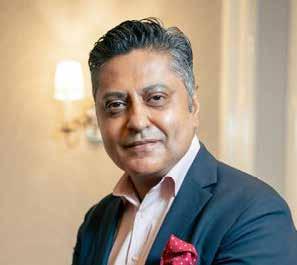
US-headquartered, Planview is reshaping how organisations connect strategy with execution, with a mission to empower leaders to deliver projects and products seamlessly in a world defined by constant change. For Razat Gaurav, Chief Executive Officer and Member of the Board of Directors at Planview, this mission has found a natural extension in the Middle East, with the company’s newly opened regional headquarters in the UAE.
“Our mission is to build the digital future of connected work. We work with over 3,000 customers and 3.1 million users globally across industries, helping organisations transform how they plan and deliver projects and product initiatives. The Middle East region stood out for us because transformations are happening here at a turbocharged pace”, said Razat.
Even before setting up a local presence, the global brand had strong inbound interest and was already supporting major customers
like Emirates Airlines through their European teams.
Razat has over 25 years of experience in enterprise software, with a proven track record of driving innovationbased growth and scaling up technology businesses. He is a trusted advisor to leading global executives, boards, and investors on topics related to digital transformation and supply chain initiatives.
“My supply chain background taught me that everything is interconnected. Using principles like Eli Goldratt’s Theory of Constraints, I learned to identify bottlenecks and unlock efficiencies— principles we now apply at Planview to organisational work and transformation. This experience also gave me a global perspective on resilience and growth, which I bring into how we help enterprises structure their transformation journeys today”, said Razat. Strategy to execution Strategy to execution remains a recurring theme at Planview, and Razat mentioned Planview Copilot,
an AI-powered assistant designed to transform work management by enhancing productivity and improving decision-making across enterprises. Leaders in the region are highly ambitious and aspirational, but operationalising those ambitions requires a clear connection between strategy and execution. “Our platform provides that link by aligning leadership priorities with work done across different organisational layers. AI now plays a crucial role here”, said Razat.
Planview Copilot leverages data from over $400 billion worth of planned and delivered initiatives, combined with advanced LLMs from partners like Anthropic, AWS, and OpenAI. This helps the brand to build intelligent, personabased agents—whether for a CIO, PMO Head and Strategy Leaders —that support decision-making, automate workflows, and eventually take on repetitive tasks. This AI-driven approach significantly reduces risk, increases productivity, and ensures seamless execution.
Three Vectors Connected platforms are becoming the backbone of modern enterprises, and what helps Planview differentiate itself is based on its vision, which is anchored on three vectors. First, connecting strategic aspirations of leadership to execution on the ground, and second, bridging handoffs from ideation through planning and delivery to outcomes. And third, supporting both projects and
products—whether waterfallstyle projects with start and end dates, or agile, iterative product initiatives.
“We don’t dictate a single way of working; instead, our platform supports all approaches within one connected work graph, strengthened by AI. This makes us uniquely positioned to integrate strategy, portfolio management, and product development across stakeholders”, said Razat, who Goldman Sachs recognised as one of the 100 Most Intriguing Entrepreneurs of 2020, and by The Software Report as one of the Top 50 SaaS CEOs in the world in 2023. Razat has also been selected to be a member of the CNBC and Wall Street Journal CEO Councils and is a Member of the Board of Directors for SPS Commerce.
“My leadership ethos is simple: employee success plus customer success equals business success. We live this daily by embedding core values into hiring, recognition, promotions, and retention. We maintain a flat culture—my “Slack door” is always open, and I commit to responding to employees within 24 hours. This transparency, combined with a passion for innovation and customer value, allows us to scale while staying true to our mission of building the digital future of connected work”, said Razat.
With rapid digital transformation in the region, leaders today face challenges in aligning execution with vision while dealing with constant change — technological, regulatory, business model,
and support for nextgeneration, cloud-native partners”, he said. “It’s very encouraging. The more use cases and realtime solutions emerge, the more inevitable their adoption becomes”.
Reflecting on Redington’s broader transformation journey, Nair said this is one of the most exciting times for the company. “We are in the right place at the right time”, he remarked. “The UAE’s leadership is forward-looking—their strategies are not just on paper but are being actively implemented. That gives us confidence to align our investments with national initiatives. This growth won’t just add up—it will multiply”.
or geopolitical. Change is exponential, not linear, and many organisations struggle with inertia.
Razat said: “Transformation must become a lifestyle change, not a one-off project. Our platform helps organisations build this ‘muscle for change’ by aligning incentives, breaking silos, embedding frameworks like Objectives and Key Results (OKRs), and providing data-driven insights. This enables leaders to make decisions based on outcomes, not hierarchy or loudest voices. For the Middle East, where transformation is accelerating, this muscle is critical”.
Data-driven decision
Planview has helped enterprises make faster, more confident decisions based on its data-driven approach. The brand worked with a global bank investing over $1 billion in technology to restructure and deliver portfolio initiatives that improved digital offerings and accelerated product launches. Using the flow velocity framework, the bank increased efficiency by 25–30%. Another example Razat shared is a high-tech consumer electronics company with hundreds of millions invested in R&D. “We enabled scenario planning for portfolio allocation across physical and software products, helping them gain significant efficiencies. In both cases, we brought together projects, resources, and financials into a single, agile framework that aligned decisions with outcomes”, adds Razat.
The UAE, Saudi Arabia, and other Middle East countries are ramping up innovation and Planview is committed to make its presence in the region, Razat, said: “The UAE is diverse in industries and includes both private enterprises and governmentled initiatives. We’re aligning our go-to-market strategy
with key sectors such as aviation, retail, banking, and public sector. Our work with Emirates Airlines is a great example—helping them allocate resources effectively and deliver digital initiatives with impact. We see similar opportunities across industries, especially as governments focus on digital transformation, data residency, and smart services”.
Middle East remains a growth driver
The Middle East is accelerating into a future shaped by ambitious projects and investments. Planview is positioning itself as a strategic partner to ensure those ambitions become reality. Razat closed with a clear commitment: “The region is experiencing an unprecedented wave of projects and investments, and we aim to ensure those are executed efficiently, aligned with strategic outcomes”.
From strategy to execution, from AI-driven insights to cultural transparency, Razat is steering Planview towards redefining how global enterprises embrace change and build the digital future of connected work. The brand is currently gearing up for its launch event in October.
“We already have a strong customer base in the region, but now we’re focused on scaling with them and expanding our presence further. We’ve mobilised a UAE-based team and are working closely with partners like AWS, Accenture, and EY to support implementation and change management. The region is experiencing an unprecedented wave of projects and investments, and we aim to ensure those are executed efficiently and aligned with strategic outcomes. Our goal is for the Middle East to become a significant part of Planview’s global business footprint”, concluded Razat.





For more than 35 years, Gulf Business Machines (GBM) has been the region’s technology trusted partner. With 7 offices and over 1,500 professionals across the Gulf, GBM offers the region’s most comprehensive portfolio spanning digital infrastructure, hybrid cloud, cybersecurity, digital business solutions, and managed services.
BothheadsetsofferadaptivehybridANCthatintelligentlyadjuststhenoise cancellation level in real time to adapt to any environment.

At GITEX Global 2025, Logitech introduced Zone Wireless 2 ES and Zone Wired 2 headsets, designed for noisy offices. With AI-powered noisecancelling mics, hybrid active noise cancellation (ANC) that automatically adjusts to minimize background noise, and a gaming-inspired headstrap design for all-day comfort, the headsets turn open
office clamour into quiet focus zones. The new headsets are available at Logitech’s stand at GITEX Global 2025, where visitors can get a hands-on experience. While open offices cultivate free-flowing face-to-face interaction, they are also notorious for distractions. Studies* cite $468 billion in productivity losses for companies
due to time-sucking distractions that hinder deep, focused work.
“Uninterrupted focus is the new currency of work. With more employees returning to office, it’s more critical than ever to protect their concentration,” said Hanneke Faber, Chief Executive Officer. “Zone
Wireless 2 ES and Zone Wired 2 for Business were engineered to safeguard against those costly distractions.”
In pursuit of an uninterrupted workflow, both headsets offer adaptive hybrid ANC that intelligently adjusts the noise cancellation level in real time to adapt to any environment, enabling workers to move from space to space without manually toggling controls. Two AI-powered noisecancelling microphones work together to tune out distracting coworker chatter, keyboards clacking, foot traffic, and the hundreds of other environmental diversions that plague employee calls.
Beyond noise cancellation
Zone Wireless 2 ES eliminates more than just noise—it
removes everyday microinterruptions that break concentration. Certified for Zoom, Microsoft Teams, and Google Meet, the headset ensures full compatibility across all platforms. For Teams and Meet, native Bluetooth call control certification means it can be used with or without a dongle—freeing up a USB port. If used with a dongle, smart enumeration hides the device from meeting apps when the headset is powered off, so users aren’t left guessing which audio source is active.
For organisations that prefer wired setups, Zone Wired 2 is a USB plug-andplay version that offers the same advanced features and certifications as its wireless counterpart, without the need to charge the battery or worry about connectivity in highdensity environments.
On the backend, IT professionals can remotely push silent firmware updates to either headset through Logitech Sync, allowing employees to stay focused without interruption—no help desk tickets, no update notification pop-ups, and no downtime.
FissalOubida,GeneralManager-MiddleEast,AfricaandIndia,Lexar,speakto Veronica Martin about the firm’s key innovations, and how Lexar is strengthening its raft of solutions to optimise customer experience - at all times ensuring resilience and a portfolio of ‘safety first’ solutions
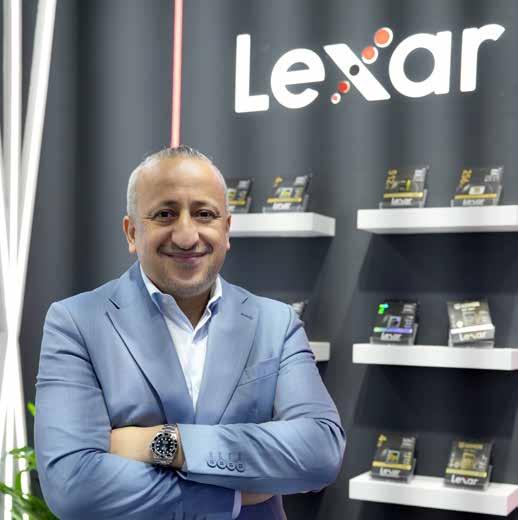
All-day comfort and performance
Inspired by gaming headsets engineered for marathon gaming sessions, the Zone Wireless 2 ES and Zone Wired 2 feature a headset strap designed for even pressure distribution, ideal for equally long workdays. Rotating earcups, a reversible mic boom, and the adjustable headband
designed for sustainability and product longevity with replaceable earpads, headset strap, and battery**. The plastic parts are made with a minimum of 30%*** post-consumer-recycled plastic, while magnets feature 100% postconsumer recycled rare earth metal; the battery is made with 100% recycled cobalt; and travel bag
is the new currency of work”.
offer a personalized fit.
And with up to 20 hours of talk time and 25 hours of listening time with ANC on, Zone Wireless 2 ES is built to last the longest workdays.
Personalised experience
Employees can personalise their own experience with customizable audio, ANC, and charging** settings in Logi Tune.
With three colours to choose from—rose, off-white, and graphite— employees can bring their personality to work.
Designed for Sustainability
Zone Wireless 2 ES and Zone Wired 2 are
fabrics are constructed with 100% recycled plastic materials.
Pricing and Availability
Zone Wireless 2 ES for Business will be available globally in November through authorized resellers, in a native Bluetooth version and another version with a receiver. Zone Wired 2 for Business will be available in December.
The Zone Wireless 2 ES and Zone Wired 2 headsets, along with Logitech’s other personal workspace solutions, will be on display at GITEX Global 2025.
*The Economist: In search of lost focus ** Only applicable to Zone Wireless 2 ES
products. This year, we launched the Armour SD card, a stainlesssteel card made from metal; it’s waterproof, dustproof and stepproof!
Many companies are unveiling new solutions and products at GITEX 2025 - what is the key innovation or launch you’re most excited to showcase this year, and why is it relevant for the region?
Every year, Lexar introduces different types of innovation in two main areas. The first is upgrading existing products. For example, we have a memory card with a speed of 2,000 MB/s, and we continue to innovate to make it faster - in fact, up to 3,000 MB/s. We also have cards that currently reach 1TB, and we’re working to expand that to 2TB and even 3TB. That’s one type of innovation.
The second type is creating completely new
We’ve also introduced a portable SSD that’s extremely compact, weighing only 13 grams, with capacities ranging from 1TB to 2TB - and even up to 4TB. It’s compatible with both Android and iPhone devices.
Every year we bring several new innovations and come to GITEX to showcase them; to let people experience them, test them, and share them with influencers for unboxing. That’s what we’re here for at GITEX.
With the UAE’s recent focus on national AI infrastructure projects, how is your company contributing to building or enabling this ecosystem?
Everyone talks about AI, but many forget one crucial fact: AI cannot function for even a single minute without storage. We are the environment;
we are the home of AI.
Right now, AI is like a dragon pet living in the house. It’s powerful, but capable of causing chaos if not contained properly. At Lexar, we create a clean, safe, and efficient environment for this ‘dragon’ by developing extremely fast SSD memory.
We now have memory that reaches speeds of 14,000 MB per second. When installed in a laptop with a powerful AI setup, it allows data to be retrieved from storage in real time, instantly and efficiently.
Lexar is continuously innovating to make its memory products faster, more efficient, and with larger capacities, because AI demands both speed and space. We are now expanding our consumer storage capacity to 8TB, which is rare in the consumer market. While enterpriselevel memory has already reached 8TB and 16TB, most consumer devices still offer only 1TB or 2TB.

Rally Board 65 simpli es video conferencing with an extremely easy-to-deploy, all-in-one collaboration device that combines powerful audio and video with a 65-inch touchscreen display.
But Lexar is breaking that barrier, moving into 4TB and 8TB storage for consumers.
AI presents huge opportunities but also real challenges, from data quality and governance to scalability. How is your organisation addressing these challenges while maximising AI’s potential for your customers?
Well, this presents a big challenge for us. Why?
Because AI is consuming almost all the memory stock worldwide, leaving regular consumers - who
need standard memory - facing both supply shortages and higher prices.
Over the next two to three years, AI will continue to consume massive amounts of storage, and the market will likely face a major supply crisis. Prices could increase by 200 to 300%.
I believe that wafer and chip manufacturing companies will need to adapt to this new reality by expanding their production cycles. Unfortunately, for large manufacturers like Samsung, SK Hynix, WD, and Micron, increasing production takes timetypically one to two years to set up and scale a single production unit. However, at Lexar, we’re
ensuring a continuous and consistent supply. We are committed to maintaining reasonable prices and providing our consumers with a reliable, steady supply of products despite market challenges.
The cybersecurity threat landscape continues to evolve in parallel with advances in AI and cloud adoption. How are you strengthening your solutions to ensure resilience and trust in this new digital era? Well, our slogan is ‘Everything from Memory’. So, we tell our photographers: go out, take photos, climb a mountain to capture a tiger, and when you come back, you can
We’re committed to maintaining reasonable prices and providing our consumers with a reliable, steady supply of products despite market challenges”.
be confident that your photos are still safe. We are the No.1 memory imaging card brand in India. The wedding industry in India is massive - thousands of weddings happen every day - and we hold the largest market share. 67% of imaging photography cards in
India belong to Lexar. Why? Because photographers trust us. They trust the quality, they trust that their data is safe, and they trust that their photos are secure. And if data is ever lost on one of our cards, Lexar provides its own free data recovery software.
Nokiaisplayinganimportantroleinenabling5Gadoptionanddigitaltransformationacrossindustriesin theMiddleEastandAfricaregion,saidMikkoLavanti,SeniorVicePresidentofMobileNetworks,Middle EastandAfrica,Nokia.OnthesidelinesoftheGITEX2025,hespokeabouthowemergingtechnologies such as AI and edge computing are shaping the next phase of connectivity.
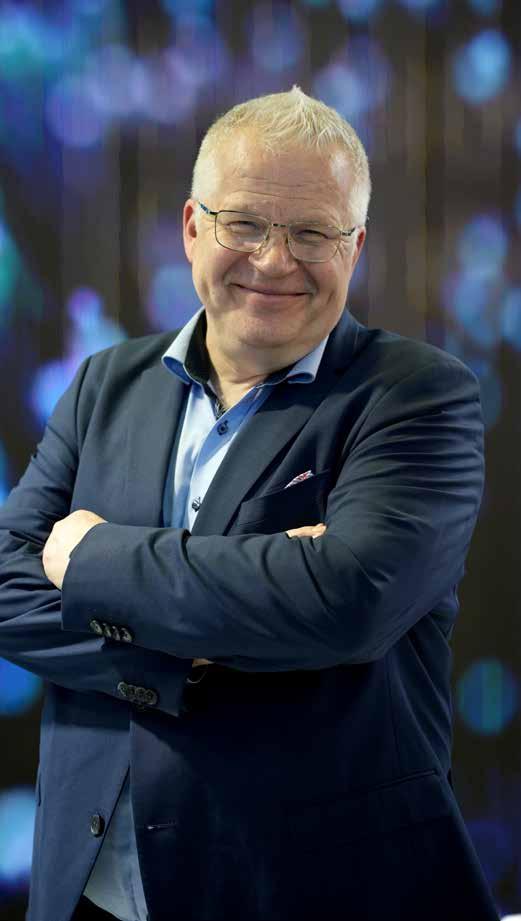
Lavanti highlighted key findings from Nokia’s MEA Mobile Broadband Index 2025, an annual report that tracks connectivity trends and adoption patterns. He shared: “According to the report, we’re seeing significant growth opportunities. Currently, 5G traffic makes up about 25% of total network traffic across the region, but in some countries, it already exceeds 50%. By the end of the decade, around 91% of subscriptions in the GCC are expected to be on 5G”.
While the Gulf region continues to lead in adoption, Africa is at the start of a major transformation. “In Africa, we’re just at the beginning of the boom”, Lavanti noted. “We’ll see significant growth in 5G traffic in the coming years”.
According to Lavanti, 5G investments are deeply tied to national visions such as Saudi Arabia’s Vision 2030 and the UAE’s digital transformation agenda. “Standalone 5G deployments seen globally are now emerging
Unlike other brands, where you are redirected to a third-party service and have to pay to recover your data, ours is free and fully developed in-house. We take the safety, security, and reliability of your data very seriously.
Are you announcing any new partnerships or collaborations during the event, and how do these align with your growth and innovation and strategy?
We are announcing something, but I can’t reveal all the details just yet. What I can share is that next year will be a World Cup year, a football year, and the world will be watching. Lexar is planning something related to football - that’s all I can say for now!
in the region as well”, he said. “5G will shape the digital economy, not only because of speed and low latency, but also because of the range of new services it enables for both enterprises and consumers”.
He emphasized the importance of fixed wireless access (FWA) in extending connectivity across the region. “In the UAE, du is a leading customer on the fixed wireless access front, and we’re seeing pockets of growth in Saudi Arabia as well”, he explained.
In many markets where fibre connectivity remains limited, FWA is proving to be an effective alternative.
“Customers are looking at fixed wireless access as a key growth area”, he added. “We expect this trend to continue significantly”.
Lavanti also addressed one of the biggest questions in telecom — how to monetise 5G investments. “There’s a myth that 5G monetization is difficult”, he said. “If we look globally, T-Mobile US
Customers are looking at fixed wireless access as a key growth area”.
is one of the best examples of how to monetise 5G”.
He noted that in the Middle East, the same potential exists through enterprise solutions and sector-specific use cases. “We’re working with several enterprise customers across areas like ports, airports, and oil and gas. Many of these projects are still confidential, but they represent the next wave of growth”, Lavanti shared. Lavanti described AI and edge computing as crucial enablers of future network efficiency and innovation. He said: “For example, with our Mantaray AutoPilot solution, we managed one million changes in a network within five days, something that wouldn’t be possible without AI”.
He also highlighted Nokia’s involvement in the AI-RAN Alliance, which focuses on advancing intelligent automation and computing capabilities.
“By bringing GPUs to the edge, services like autonomous driving become more relevant because computing power is now closer to the customer”, he explained.
Reflecting on his experience at GITEX, Lavanti said, “This is my second GITEX. Earlier this year, I attended the event in Morocco, which had significant engagement with North African customers. Here, it’s on another level; the amount of interaction with customers is excellent”.
He concluded by emphasising Nokia’s continued growth trajectory in the region.
“In 5G, we are the number two player in the Middle East and Africa market, and we are continuing to grow. This is a great place to collaborate with our customers and drive innovation together”.


At GITEX 2025, Ranjith Kaippada, Managing Director of Cloud Box Technologies, highlighted how the company is driving innovation, investing in local capabilities, and contributing to the UAE’s bold vision for an AI-powered future.

As organisations across the Middle East ramp up their digital transformation journeys, Cloud Box Technologies is stepping up as a trusted system integrator to help enterprises efficiently harness the power of AI, cloud, and cybersecurity.
Kaippada shared: “Cloud Box Technologies is positioning itself at the forefront of the
digital transformation discussions. Our focus is on emphasising our role as a trusted system integrator that helps customers accelerate their transformation journeys through our capabilities”.
He added that Cloud Box Technologies continues to align closely with global technology leaders such as Dell Technologies. “Dell
recently signed an agreement with NVIDIA for an AI factory in the U.S. The cascading effect of that partnership helps us understand how Dell is embedding AI into its products and how fast those innovations reach the market”, he said.
“Through this collaboration, we can get certified, trained, and ready—so that we can pass this expertise
The announcement is part of Salesforce’s continued investment in the Middle East, reinforcing the company’s commitment to the region and further aligning with the UAE’s vision to serve as a model for digital transformation, innovation, and excellence.
At GITEX Global 2025, Salesforce, the global leader in AI-driven customer relationship management (CRM), announced it is set to launch Slack data residency in the United Arab Emirates (UAE), giving organisations in the country the ability to use the agentic operating system for work while retaining all data within the UAE’s borders.
“By combining a modern, agentic work platform like Slack with full data residency in the UAE, we’re empowering both public and private sector organisations to innovate confidently”,

directly to our customers. It keeps us ahead of the game”.
Speaking on the company’s participation at GITEX, Kaippada said, “Every year, we come with the aspiration of meeting more customers and it always proves to be a success. This year, the crowd has been amazing—lots of customers and lots of great conversations”.
Kaippada noted that Cloud Box Technologies is showcasing its solutions, investments in its Security Operations Center (SOC), local capabilities, and new developments around AI.
experience new services and technologies first.
The government is not only supporting innovation but also investing heavily in it and are actively collaborating with AI vendors to bring cutting-edge solutions to the market”.
He added, “We can already see how AI is transforming key sectors—from transportation and healthcare to education.
We should be proud to be in a country that’s driving this change, and even prouder to be part of it. At Cloud Box Technologies, we see ourselves
Cloud Box Technologies always believes in having local capability and homegrown solutions”.
When asked about the regional outlook, Kaippada emphasised that the UAE continues to lead the way in adopting
said Mohammed Alkhotani, SVP and GM, Salesforce Middle East. “This commitment to localisation not only meets the country’s data sovereignty requirements, but also enables entities to leverage worldclass tools for realtime communication, and efficiency, while driving the UAE’s digital ambitions forward”.
Slack allows humans and AI agents to work together, using natural language, and the news follows Salesforce’s recent announcement that it is giving partners and developers the tools to securely connect AI with rich customer-owned conversational data in Slack as part of the next evolution of the platform.
Slack provides secure, flexible, agent-ready access to conversational data through its real-time search API, enabling agents to move beyond generic responses to deliver contextaware, user-specific conversations that are far more relevant, accurate, and useful.
as catalysts helping customers implement these transformative solutions”.
Kaippada highlighted the company’s strong commitment to local presence and innovation.
“Cloud Box Technologies always believes in having local capability and homegrown solutions”, he said.
“We have our office here, our Security Operations Center here in the UAE, and now we are coming up with an AI product that has been registered in the U.S. but will be marketed from Dubai. This will be a game-changer for us”, he revealed.
new technologies globally. He said: “The visionary leadership of the country ensures that citizens and residents
We’re empowering both public and private sector organisations to innovate confidently”
At GITEX Global in Dubai, Salesforce is demonstrating how organizations can harness intelligent automation and digital labour to drive competitive advantage and transform their operations, becoming ‘Agentic Enterprises’.
Salesforce has also announced it is expanding the data, governance, security, and semantics capabilities across the Salesforce Platform — creating a unified foundation where every AI agent operates with the same accuracy, context, and control.
Kaippada concluded by reaffirming Cloud Box Technologies’ commitment to driving transformation in line with the UAE’s national vision. “We are proud to contribute to this ecosystem of innovation”, he said. “With strong local capabilities, global partnerships, and AIled solutions, we are ready to help customers accelerate their digital transformation and be future-ready”.
This trusted foundation helps companies move from cautious experimentation to transformative action, scaling AI responsibly across every workflow to power the Agentic Enterprise.
The Trusted AI foundation delivers three core capabilities that make the Agentic Enterprise accurate, explainable, and secure:
• Context and Accuracy — ensuring outputs are grounded in unified business data and knowledge.
• Built-in Trust, Security, and Compliance — embedding visibility, control, and enabling compliance into every workflow.
Open and Unified — connecting agents, data, and semantics across ecosystems to avoid lock-in and help ensure consistency.
Learn more about Salesforce at GITEX Global 2025 by visiting the company’s booth in Hall 4, Stand B15.













CNME Editor Mark Forker sat down with Francois Van Deventer, Director & CTO, Emerging Markets –Eastern Europe, Türkiye, MENA and Africa, at Citrix, and Pierpaolo Taliento, General Manager, at Cloud Software Group, and Thomas Rizkallah, Regional Director – MENA, at Cloud Software Group, to learn how both companies are working together to reimagine the workplace as an experience, the need for a simplified and unified platform in the enterprise space – and the need for governance to act as a seatbelt when it comes to AI.
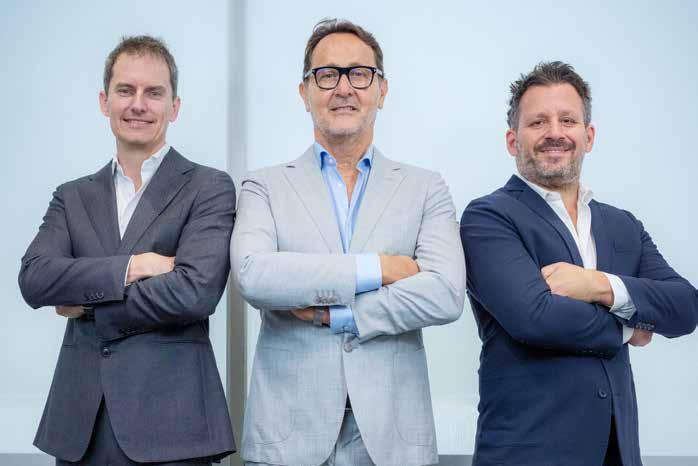
Citrix was formed in 1989 and was one of the first companies in the world to pioneer remote access.
The company’s mission statement was that people should be able to work from anywhere, and 36 years on that belief is unwavering.
Citrix was acquired in 2022 and is now part of the Cloud Software Group.
And ahead of GITEX Global 2025, CNME were afforded the opportunity to sit down with executive leaders from the Citrix and Cloud Software Group teams to learn more how their technologies are transforming experiences in the workplace.
Francois Van Deventer, Director & CTO, Emerging Markets – Eastern Europe, Turkey, MENA and Africa, at Citrix, has enjoyed a decorated career to date, and is a highly respected technology leader across the region, that first came to prominence when he was part of the team at Riverbed.
He has spent the last 7 years at Citrix and has been a key figure in its success.
In our work from anywhere world, there is increasing pressure on organisations to deliver seamless employee experiences, but many have struggled to ‘reimagine the workplace’.
Van Deventer stressed the need for businesses to recognise that they need to foster an environment in which employees don’t view work as a location.
“Work today is an experience, not a location. Citrix enables that
experience with Citrix DaaS and Virtual Apps and Desktops, which give employees secure, highperformance access to all their apps and desktops across any device, network, or location. Our partnership with Google Chrome Enterprise Premium ensures that even lightweight endpoints can deliver a full enterprise experience, while the integration of UNICON strengthens access in education and enterprise use cases. By optimising performance with analytics and adaptive technologies, Citrix helps organisations not only deliver flexible work but also improve employee engagement and retention — turning the digital workspace into a competitive advantage”, said Van Deventer.
Van Deventer highlighted the importance of security, compliance, and governance when it comes to delivering seamless collaboration.
“Collaboration is only effective if it’s secure.
Citrix delivers this balance by combining Zero Trust access through Citrix Secure Private Access with the delivery of apps and desktops via Citrix DaaS and Virtual Apps and Desktops. The acquisition of deviceTRUST enhances contextual security, dynamically adapting access based on device posture and risk.
NetScaler adds advanced security for applications, while our acquisition of Strong Network extends these protections into
Citrix helps turns the digital workspace into a competitive advantage”.
developer environments, ensuring code and data remain secure. With built-in support for governance frameworks like GDPR, HIPAA, and ISO standards, Citrix enables enterprises to collaborate confidently across SaaS, VDI, and cloud apps, ensuring productivity never comes at the cost of compliance”, said Van Deventer.
One of the biggest challenges for enterprises has been the integration of disruptive technologies into their existing processes and systems.
Many tech companies come with the promise of ‘removing complexity’ in the transition towards a unified digital workspace, but they don’t always deliver on their claims.
However, Van Deventer explains how Citrix can simplify the complexities that exist.
“Enterprises face rising complexity from SaaS, cloud, and legacy apps. Citrix simplifies this with a single platform that delivers and secures workspaces across any environment.
Citrix DaaS and Virtual Apps and Desktops abstract infrastructure complexity, while NetScaler ensures
reliable, secure app delivery. Secure Private Access and deviceTRUST add adaptive access controls, and Strong Network extends governance into developer workspaces. By consolidating management, applying consistent policies, and leveraging analytics to automate security and performance, Citrix reduces operational costs while giving IT teams the confidence to support business growth without added risk”, said Van Deventer.
CNME Editor Mark Forker then spoke to Thomas Rizkallah, Regional Director – MENA, at Cloud Software Group.
He has an impressive credentials, and has worked with companies such as McAfee, Microsoft and HPE, before joining Cloud Software Group in 2019.
Rizkallah is a hugely respected and seasoned IT sales professional, and he began our conversation by outlining how Citrix was evolving to support the future of work in an increasingly hybrid and remote-first world.
“We’re evolving by focusing on delivering a unified platform that
centres on a cohesive user experience. The Citrix platform ensures that the unified workspace and future of work is platform, device and location agnostic. Simply, this allows organisations to future-proof their strategy and reduce operational complexity by enabling employees, to work on any device form factor, operating system and from any location, serviced through an on-premise, or cloud infrastructure”, said Rizkallah.
When pressed on what role he sees Citrix playing when it comes to bridging the gap between flexibility and enterprise-grade security, he declared that Citrix would adopt a very ‘data centric’ approach.
“We continue to ensure that we take a data centric approach by managing and securing data, at the data centre, rather than on the device. Contextual access and profile-based security access ensures that enterprises benefit from a consistent security posture, irrespective off the device, platform or application. We further bridge the gap by upholding zero-trust principles by ensuring users are continuously verified for access rather than focusing on the initial login process. Our platform also leverages adaptive security allowing us to monitor and trigger policies in real time based on user identity, location and device type. This serves both the internal user and external users such as contractor access”, said Rizkallah.
The conversation then shifted towards market differentiators, and Rizkallah explained what makes Citrix stand out from the rest of the crowd.
One of the primary factors was the autonomy, choice and flexibility that Citrix provides for its customers.
“Our strategy is focused on ensuring customers have choice that moves them away from the lock-in technology scenarios they tend to experience with our competitors. We have built and engineered our solutions to ensure there is robust integration access and licensing flexibility through our platform with almost every technology partner and cloud provider available today. We have invested and built alliances with Microsoft, Google, Amazon, Apple, Oracle
and many others to ensure enterprises have a modular, scalable and cost-effective model when they depend and rely on Citrix at the centre of this”, said Rizkallah He concluded by adding that Citrix delivers highly flexible subscription licensing models through solutions that simplified the enterprise journey by managing, securing and observing everything at the end point, perimeter, gateway, and data centre.
The final segment of this 3-part series of interviews conducted by CNME Editor Mark Forker was with Pierpaolo Taliento, General Manager of Cloud Software Group.
Our conversation was focused primarily on the burning topic of AI.
There is no doubt that AI is the future, and we are already witnessing firsthand how it is transforming industries on a global scale.
However, we are also acutely aware of the fact that the technology needs guardrails.
Taliento said it was imperative that businesses don’t let AI run wild.
Organisations can harness the power of AI to drive productivity, and they can do that without compromising sensitive data, that can remain intact, quite simply by refusing to let AI run wild. Productivity comes from giving AI access to the right data, not all data. Guardrails, segmentation, and zero-trust aren’t bureaucracy, they’re oxygen masks. You don’t let every intern read the CEO’s emails; don’t let AI agent either,” said Taliento.
When asked what role governance plays in controlling how AI interacts with enterprise data in the digital workspace, Taliento said that governance had to be the seatbelt.
“Governance is critical. It doesn’t make the car faster, but it stops you from flying through the windshield. Policies, permissions, and audit trails make sure AI doesn’t turn into a liability disguised as innovation. Without governance, digital workspaces can become the digital Wild West”, said Taliento.
Taliento concluded what was a terrific overall conversation by shining light on how Citrix’s ‘Secure the Work’ approach helps balance AI-driven efficiency with the need for privacy, compliance, and cyber resilience.
“Citrix doesn’t chase AI hype; it fences it. “Secure the Work” means the AI can see what it needs, do what it should, and nothing more. Privacy is baked in, compliance isn’t an afterthought, and resilience isn’t optional. Think of it as AI on a leash long enough to run fast, short enough to never cross the line”, said Taliento.


GITEX GLOBAL 2025 Oct 13 -17 | Dubai, United Arab Emirates


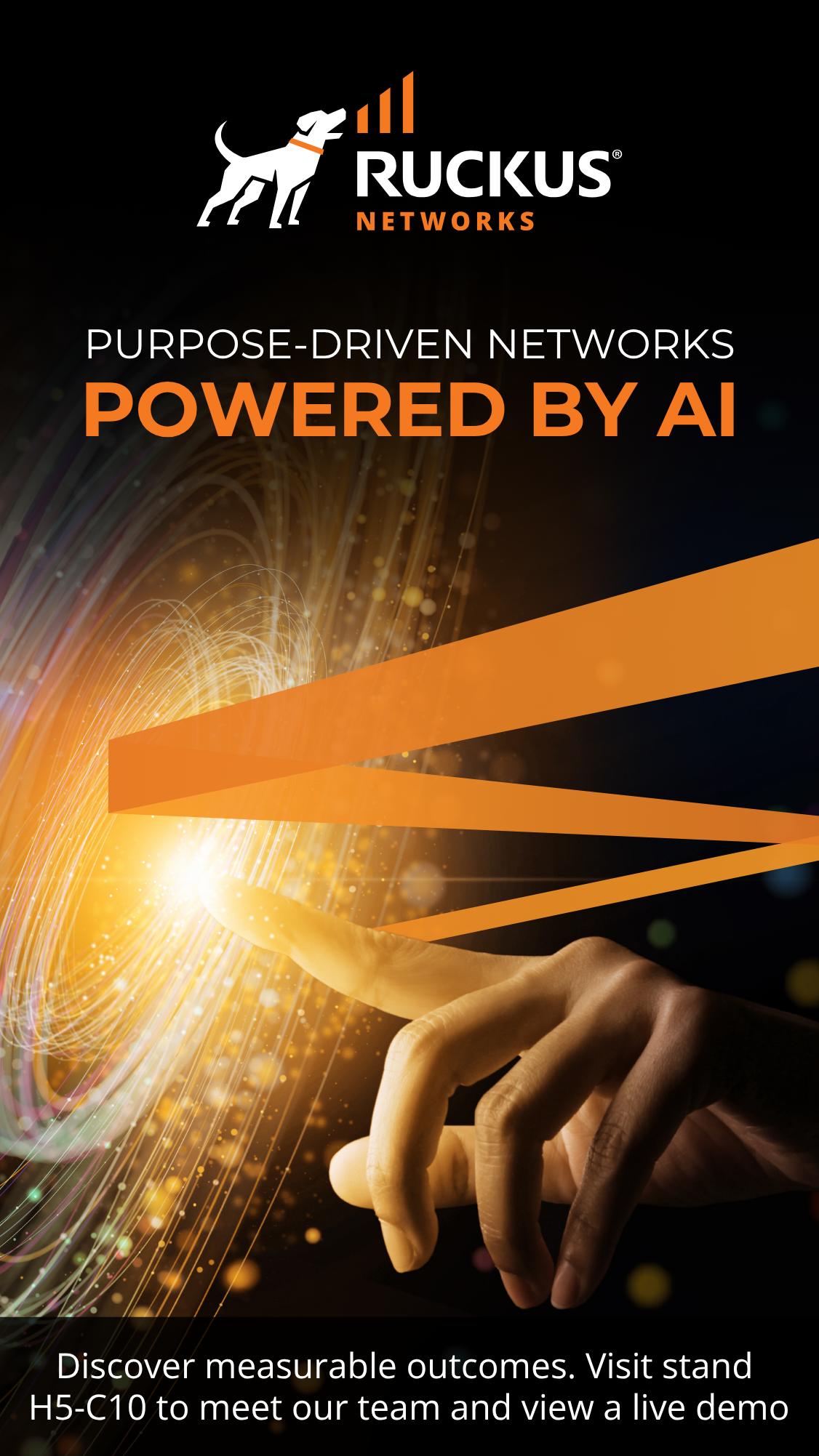

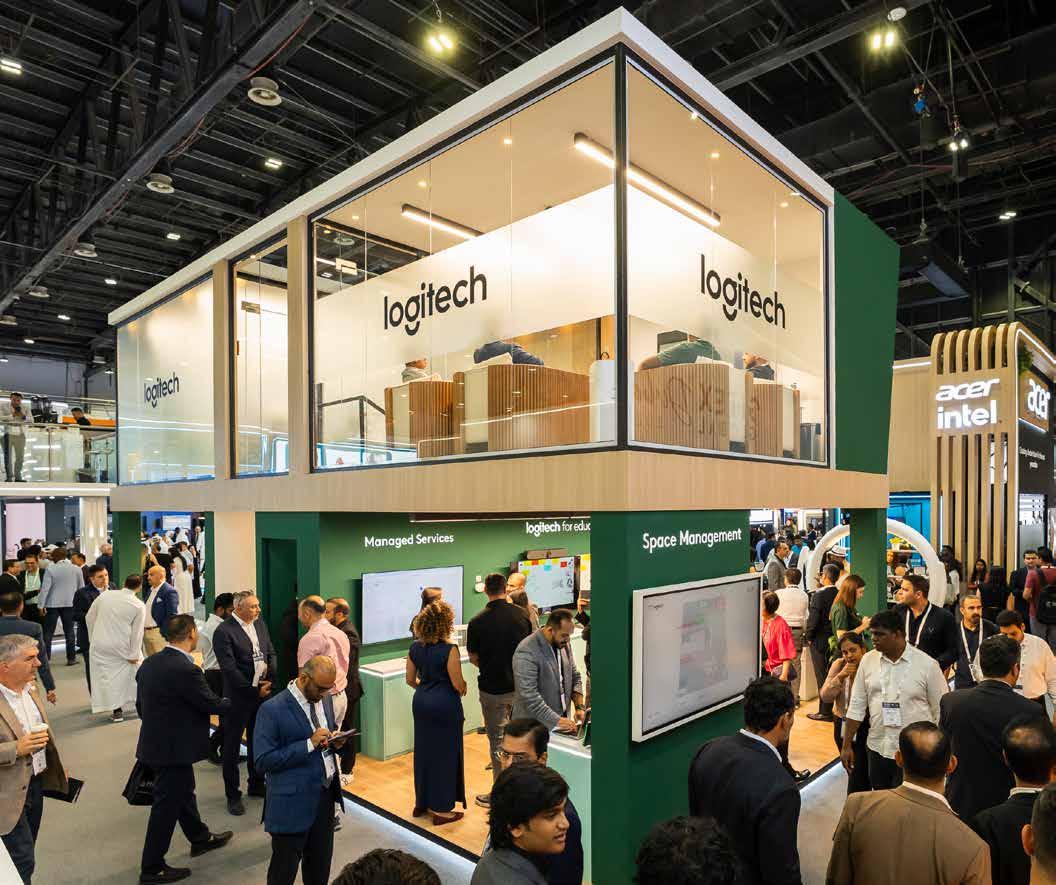
Vertiv™ OneCore: all-in-one, AI-enabled data center architecture, ready for high-performance workloads and rapid deployment.
Supports AI data centers and liquid cooling
Ideal for colocation and white space deployments
Delivers speed, scalability, and long-term flexibility
Tailored for 5+ MW turn-key data centers
Simplify complexity, deploy smarter Visit vertiv.com to learn more.


